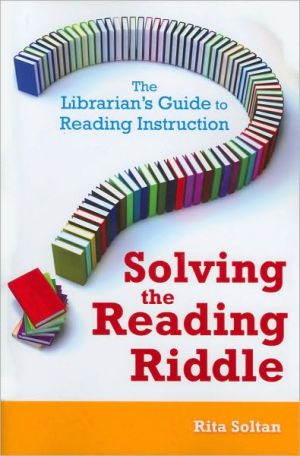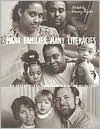Solving the Reading Riddle: The Librarian's Guide to Reading Instruction
As a children's librarian, you are increasingly being called upon to support schools and parents in teaching children to read—from early literacy initiatives and read-alouds to parent workshops and collection development endeavors. Yet, if you're like most public librarians, you probably have no clue as to what reading strategies other educators use. Understanding reading instruction theory and practice can help you function better in these roles and communicate more effectively with other...
Search in google:
This book explores what the past 75 years of reading instruction has meant to children, teachers, and parents, and how children's librarians and school media specialists are a crucial part of the developing philosophy and strategy.
Preface viiAcknowledgments xiIntroduction xiiiPart 1 Everything Old Is New Again 1Chapter 1 Reading History 3Chapter 2 Innovative Approaches for the Struggling Reader 17Chapter 3 What It All Means Today 31Part 2 The Reading Riddle and the Role of the Children's Librarian-Dovetailing Roles with Reading Instruction 41Chapter 4 The Reading Advocate 43Chapter 5 Family Reading Coach 67Chapter 6 Partner with Educators 79Chapter 7 Keeper of the Tools 91Chapter 8 Insights 107Glossary of Reading Instruction Terms 113Index 117
\ From the Publisher"Very nicely organized and thoroughly 'user-friendly', Solving the Reading Riddle is an ideal Library Science curriculum textbook and a highly recommended addition to academic Library Science reference collections and professional reading lists."\ -\ Midwest Book Review\ "Librarians have always promoted reading, usually emphasizing "good reads." In today's environment, librarians need to participate more centrally in reading instruction. Leveraging her reading and public librarian experience, author Soltan provides background information about reading instruction and suggests ways for librarians to get involved. Basically, she advocates a balanced reading-instruction approach of rich materials and reading skills (e.g., phonics, comprehension strategies, etc.). She describes a sampling of intervention programs and leveling processes. In her strongest chapter, Soltan suggests ways for librarians to serve as reading advocates and provides several lists of specialized children's books (e.g., pattern stories, graphic novels for struggling readers). She also describes ways to coach family reading activities and work with educators. The book … has some useful ideas, particularly for working with families."\ -\ Booklist Online\ \ \


